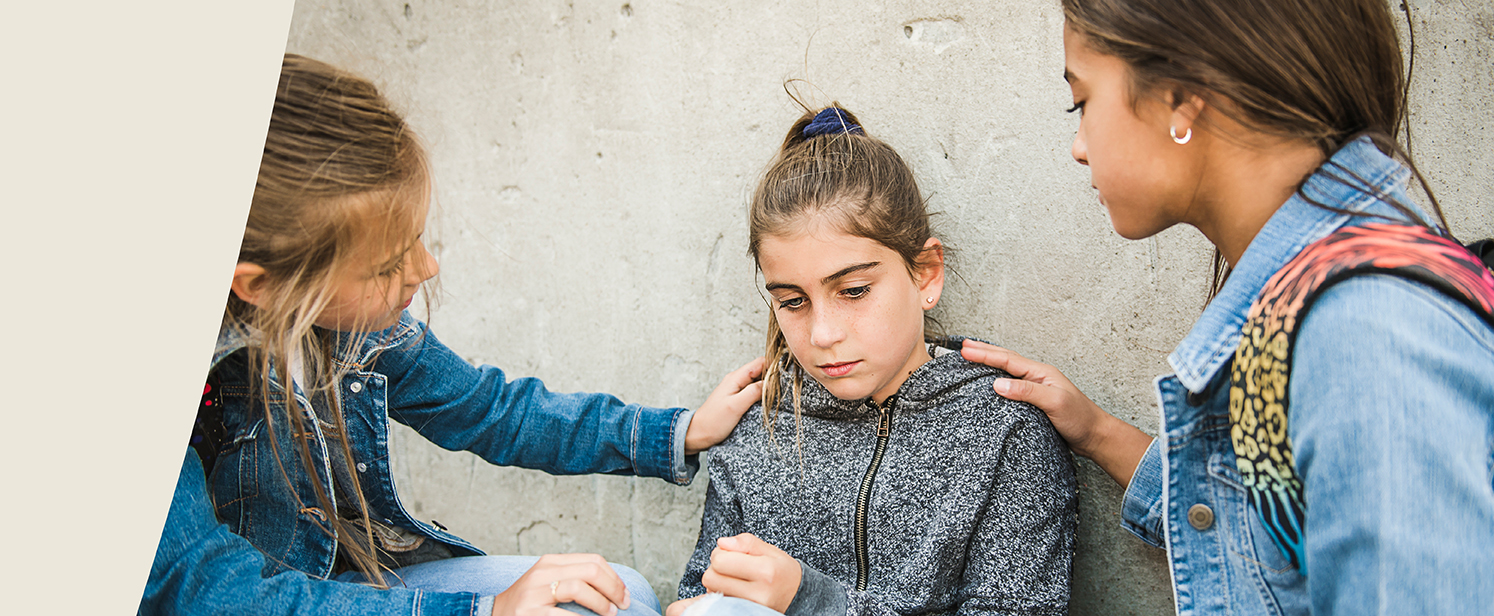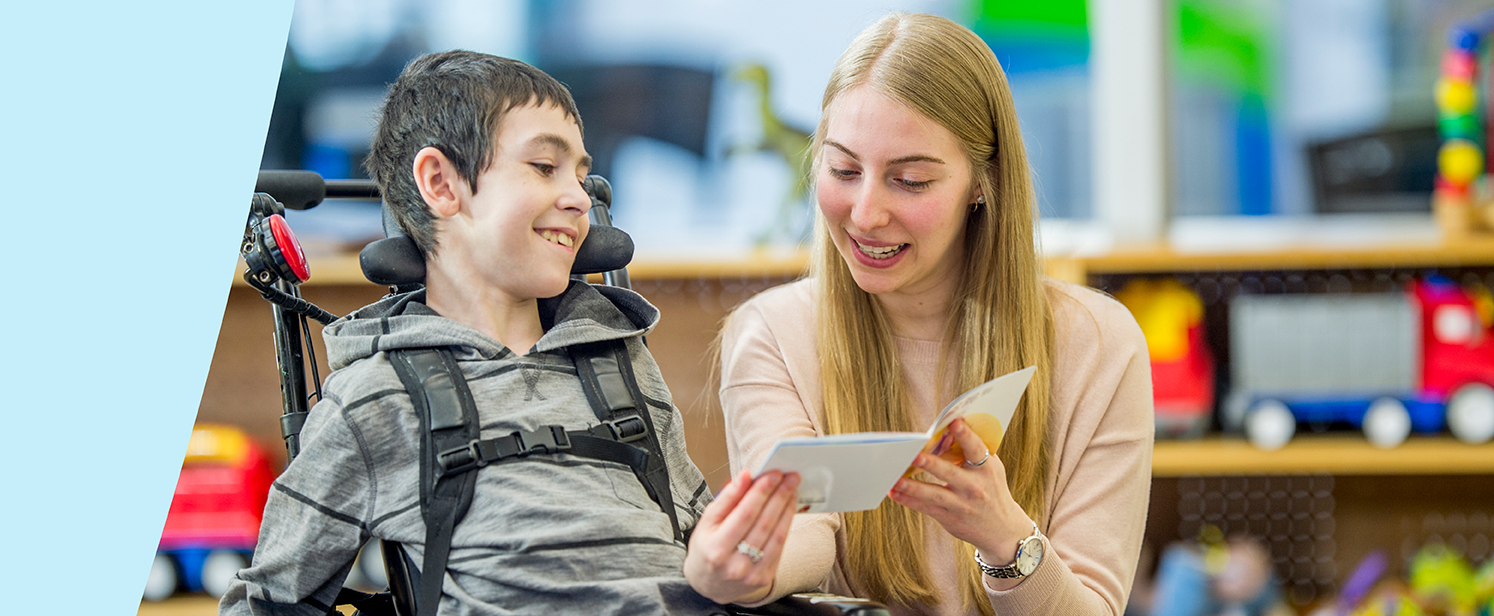Public education
Ontario's public education system is among the best in the world, consistently ranking high in international assessments. It offers students a well-rounded education that prepares them with real-life and job skills they need to succeed in a globalized world.
If there is a discrepancy between this guide and the Education Act, its regulations or policies, the Education Act, regulation or policy apply.
Building a strong base for future success
In 2023, we took actions to refocus our education system on academic achievement that sets students up for success with real-life and job skills.
That starts with clear priorities set out by the province on school boards that require them to focus on foundational back-to-basics learning on reading, writing, math and STEM education.
School boards will be assessed on how they have adopted these priorities in their public multi-year plans.
Your school board must:
- engage with students, staff, communities and parents
- use quantitative and qualitative data to develop multi-year plans that are responsive to local needs
- engage parents within the first 2 months and last 2 months of the school year about its multi-year plan on how it addresses provincial priorities
- publicly post its multi-year plan, including the student achievement plan
School boards will send us their student achievement plan by June 30 each year.
School options for your child
You can generally choose the type of school your child will go to.
If you are a French-language rights holder you can send your children to a school that’s part of a French public or French Catholic school board.
Types of public schools
Schools are administered by district school boards and school authorities. There are 72 school boards and 10 school authorities in Ontario.
District school boards are divided into 4 types:
- 31 English public
- 29 English Catholic
- 4 French public
- 8 French Catholic
School authorities consist of:
- 4 geographically isolated boards
- 6 hospital-based school authorities
There are also provincial schools and demonstration schools (including Consortium Centre Jules-Léger serving Francophone students) for students who are:
- Deaf or hard of hearing
- blind or have low vision
- Deafblind
- have severe learning disabilities
Kindergarten
You have the option of registering your child for junior kindergarten for September of the year they turn 4.
Some school boards start their school year in August. Check with your school board to learn when you should register your child.
Research shows that attending junior and senior kindergarten gives children a solid foundation for future learning.
Learn about preparing your child for kindergarten.
Your child must attend school if they turn 6 before the first day of school, unless excused. Review the list of reasons your child may be excused from attending school.
Choice of programs
As your child moves through the education system, there will be more options to consider, for example:
- French immersion and Extended French programs
- high school programs
- careers in the skilled trades
- online learning for high school students
- options for remote learning
- summer school and evening credit courses
- Indigenous languages programs offered in elementary or high school
- international languages programs for elementary school students that are offered outside the regular school day
Contact your school or school board for more information about these programs.
Find your school
Search for publicly funded schools near you. You’ll find details such as location, contact information and a link to the school website.
Applying to another school within your school board
School boards can have their own policy about how students are assigned to schools or whether families can choose which school to attend.
Visit your school board website or contact your school for the rules about school boundaries in your area.
Applying for admission in a different school board
You can apply for your child’s admission to a school in another board’s jurisdiction in the following cases. For more information about admission requirements, contact the school.
You live near the boundary of another school board
You can apply to send your child to an elementary school in another board if all of the following apply:
- you live too far from a school in your board and your board does not provide transportation
- the other board has space for your child at an elementary school
- the other board is the same type as your existing board (with certain exceptions). For example, they are both English public school boards.
For more information about admission requirements, contact the school.
You own property in another board’s boundaries
You can enrol your child with a school board where you don’t live if all of the following apply.
You must have a property (for example, business or secondary residence) in the other board that:
- is taxed to support that school board
- has a taxation value that meets the board’s threshold
School boards can set their own policies about:
- how to assign students to schools
- if the school board allows families to choose a different school
For more information about admission requirements, contact the school.
Your child is in high school
You can enrol your child in a high school in a school board where you don’t live if all of the following apply:
- the other board is the same type as your existing board
- the other board has space for your child at the school
Speak with your child’s school principal for more information.
Know what your child is learning
You can keep up to date on what your child is learning in school and find resources to support them by:
- visiting Ontario’s curriculum and resources site and exploring resources for parents
- contacting your child’s teacher or principal for information about your child’s learning and resources to support them
School year calendar
Learn about key dates in the school year.
Visit your child’s school or board website to find the calendar for your school community.
Information about professional activity (PA) days
Your school or school board must post information prominently on its website about what your child’s educators are learning during their PA days.
The school or school board must post the information 14 calendar days before the PA day, and include these details about each activity:
- date, time and format (for example, in person or online)
- name of the person or organization hosting
- names and titles of persons presenting or delivering the material
- name of each school participating
- topic or focus and the specific material to be covered
- how material will be presented
- methods of learning that are to be engaged
- titles and publication details of any resources used
Opting out of certain learning
You can opt out or ask to exempt your child from certain learning.
This includes:
- Grades 1 to 8 Human Development and Sexual Health in the Health and Physical Education curriculum
- the online learning graduation requirement for high school students
Speak with your child’s teacher or principal about exemptions and how to ask for one.
Stay informed about your child's progress
Stay informed about how your child is doing in school. Get details through report cards, parent-teacher meetings and standardized test results.
Report cards
Kindergarten
You will get communication about your child’s learning throughout the school year. This includes:
- an initial observations report between late October and November
- 2 more reports during the rest of the year
Find out more about kindergarten communication of learning.
Grades 1 to 8
Each year, you will get the following for each child:
- a fall progress report
- 2 provincial report cards (1 in winter and 1 at the end of the school year)
Grades 9 to 12
You will get the following for each child in high school:
- 4 report cards per year — if your child is on a semester system (a first and final report for each semester)
- 3 report cards per year — if your child is not on a semester system
Learn more about report cards and how your child’s learning is evaluated and assessed.
Parent-teacher meetings
Your child's teacher will meet with you to help you understand:
- your child's progress
- what is being taught in class
- how you can help your child learn
- what you can do at home to help them with homework
Schools aim to provide at least 1 or 2 in-person or virtual meetings with parents each year. These could include you and the teacher, and sometimes your child too.
You can also ask to meet with your child’s teacher or have a phone call with them at any time throughout the school year.
Your child’s teacher can help you get resources and can give advice.
Support your child at home with online resources
Your child’s teacher may also direct you to tools that help your child with their learning.
These may include:
- French-language learning resources such as:
Early reading screening
Early reading screening is an important tool to identify students who have difficulties with reading. The purpose of early reading screening is to:
- monitor your child’s development in early reading skills
- find out if your child needs more support
Students in senior kindergarten, Grade 1 and Grade 2 may be screened. Your child’s report card will show the date and results of their early reading screening.
Ontario Student Record (OSR)
The OSR tracks your child's education journey in Ontario schools. You can
- review it until your child turns 18
- ask for errors to be corrected
- have information removed if it is outdated or not helpful to your child’s learning
Contact your principal if your child is under 18 and you want a copy of their OSR.
You can read the OSR Guideline for more details.
Standardized tests from the EQAO
The Education Quality and Accountability Office (EQAO) provides individual student reports, which include overall results for each student participating in the Grade 3, 6 and 9 assessments. Grade 3 and 6 assessments focus on reading, writing and math. The Grade 9 assessment focuses on math. Your school will send you your child’s EQAO results.
Students also participate in the Ontario Secondary School Literacy Test (OSSLT) that measures whether your child meets the minimum standard for literacy across all subjects up to the end of Grade 9.
Successfully completing the literacy graduation requirement is needed to get an Ontario Secondary School Diploma (OSSD). Students who do not successfully complete the OSSLT have other opportunities to meet the literacy graduation requirement. Contact your school principal to find out about these options.
You can also sign up for EQAO’s webinars.
Accommodations for students with special education needs
Students who have an individual education plan (IEP) must be given the opportunity to participate and demonstrate the full extent of their knowledge and skills in provincial assessments. School boards are required to provide accommodations to facilitate their participation. Students can access accommodations provided in a classroom and in alignment with their individual education plan (IEP) when completing the EQAO assessments.
In a small number of cases, principals can consider an exemption from a provincial assessment. Only students not working toward their Ontario Secondary School Diploma (OSSD) can be considered for an exemption from the OSSLT.
High school graduation requirements
To earn a high school diploma in Ontario, students must:
- earn 18 compulsory credits
- earn 12 optional credits
- pass the literacy requirement
- earn at least two online learning credits
- complete at least 40 hours of community involvement activities
Learn more about what your child needs to get their diploma.
Options after high school
Attending apprenticeship training, college or university are some of the pathways your child can choose after high school. In most cases, your child needs their high school diploma for these.
Going to college or university
Ontario has 23 publicly assisted universities, 24 public colleges and more than 500 registered career colleges and institutions.
All schools set their own admission requirements. Learn about applying to college or university.
Going to apprenticeship
An apprenticeship is formal training for those who want a career in the skilled trades. It combines training on the job and in the classroom. As an apprentice, your child can take classes and learn a trade by working under the direction of experienced workers.
Find out how your child can qualify for an apprenticeship, find a sponsor or employer to hire them, or get money or grants to help you pay for apprenticeship training and tools.
Learn about the Ontario Youth Apprenticeship Program (OYAP) and other specialized job skills programs in high school that can help prepare your child for an apprenticeship while still in high school.
Attendance
Regular attendance is important for your child’s academic success. In some cases, your child may be excused from attending school.
For example, if they are:
- being home schooled
- observing a religious holy day
- serving a school suspension or expulsion
- sick or have an unavoidable reason, including a mental health concern
- not provided with transportation by a school board and there is no school within a specific distance from your house
- away at music instruction for up to 1 half day a week
Your child may also be excused from attending school full-time on compassionate grounds if they are 16 years or older.
For more information, please contact your school.
Safe arrivals
You and your school both play a part in ensuring your child arrives safely at school. Every elementary school in Ontario uses a safe-arrival program to ensure they know where their students are.
If you have not let the school know that your child will be late or absent, you can expect a call from the school. This is to make sure our children are safe and accounted for.
Safe and accepting schools
We all have a part in creating safe, inclusive and accepting school environments where everyone — children, students, staff, parents and the community — feels welcome, safe and respected.
A positive school climate and a safe learning and teaching environment are essential for students to succeed in school.
All students, parents, teachers, staff and community members have the right to be safe and feel safe in their school community. With this right comes the responsibility for everyone to be accountable for their actions and to contribute to a positive school climate.
Speak with the principal to learn what your child’s school is doing to promote a positive school climate.
Code of conduct
You can expect a positive and respectful school environment for both you and your child. To help ensure this, all members of the school community must follow their school board’s code of conduct, which must be based on the Provincial Code of Conduct.
To develop and review their codes of conduct, school boards actively gather insights from a range of partners.
This could include:
- school councils
- parent involvement committees
- Special Education Advisory Committees
- Indigenous Education Advisory Committees
- students, staff, parents, volunteers and community members
Your school board must clearly communicate its code of conduct to all parents, students, staff and other members of their school communities.
As part of a school community, individuals are held responsible and accountable for their behaviours and actions. School boards and principals must address serious incidents, including violations of school board codes of conduct.
Visit your school board’s website to read its code of conduct.
Alcohol, cannabis and illegal drugs
The use of alcohol, illegal drugs and recreational cannabis is never acceptable at school.
Students in Grades 4 to 12 under the influence, or in possession of, recreational cannabis may be suspended. They can be expelled if they give drugs to a minor or traffic illegal drugs.
Medical cannabis use is accepted. A medical cannabis user can possess cannabis for their own personal medical purposes under applicable laws.
The Provincial Code of Conduct does not allow the use or possession of:
- alcohol
- recreational cannabis
- illegal drugs
Smoking and vaping
The Smoke-Free Ontario Act, 2017 prohibits smoking tobacco and cannabis as well as the use of electronic cigarettes (vaping):
- at private and public schools
- on school grounds
- in all public areas within 20 metres of these grounds
All members of the school community should be aware of smoking and vaping rules at school.
Progressive discipline and safety policies
Violence, hate and racism are never acceptable in Ontario schools. Our approach to making schools safe involves the whole school and focuses on:
- promoting positive student behaviour through a code of conduct and anti-bullying policies
- providing early and ongoing intervention
- preventing inappropriate behaviour
- addressing inappropriate behaviour through progressive discipline, which can result in suspension and/or expulsion
Every school must have a progressive discipline policy.
With progressive discipline, principals choose from a range of options to handle inappropriate behaviour and help students:
- improve their behaviour
- learn from their choices
The goal is to help stop the behaviour from happening again.
When principals use progressive discipline, they should consider:
- each student and their circumstances
- the nature and severity of the behaviour
- the impact of the behaviour on the school climate
Principals will have ongoing discussions with the student and their parents when choosing an option to help the student improve their behaviour and make good choices.
Learn more about progressive discipline.
Bullying
Your school board must have a policy that protects students from bullying. If you are worried about your child or want information, talk to your school’s principal. They can give you information on:
- policies to prevent and address bullying
- plans that outline what school staff do to resolve bullying
- policies for progressive discipline
- the code of conduct, which sets out how students, teachers and other members of the school community should behave toward each other
If you think your child is being bullied, Bullying — we can all help stop it has information about:
- what to watch for
- what you can do
- where you can go to get help
- what you can expect from the school
It also has information about cyberbullying and online exploitation.
Serious incidents
If your child was involved in a serious incident or was harmed, your school’s principal will contact you.
Learn about staff responsibilities to report an incident that happens at school.
Activities that can lead to suspension or expulsion depend on the grade of the student.
Learn about:
If your child is suspended or expelled
If your child is suspended, the principal must make all reasonable efforts to inform you within 24 hours of the suspension. You will also get written notice. If the suspension is for more than 5 school days, the principal will give you information about a program to support your child.
If an incident involving your child is being investigated and could result in expulsion, the principal must make all reasonable efforts to speak to you. You have the right to appeal a principal's decision to suspend your child or a school board's decision to expel your child.
Learn more about what happens if your child is suspended or expelled from school, including how decisions are made and what supports are available to help students return to school.
Sex trafficking
Your school board must have a protocol to prevent, identify and recognize sex trafficking and develop interventions that are responsive to the diverse needs of students.
Contact your school or school board to learn more and ask for a copy of their anti-sex trafficking protocol.
Learn more about sex trafficking, including the warning signs, how traffickers target and recruit people and resources to help prevent trafficking.
Physical safety procedures
Shelter in place
If a major environmental or weather-related event is happening, the school will go into a “shelter in place”. This means that everyone stays inside the school building for protection.
Hold and secure
If a violent incident is happening outside and it is not related to the school (for example, if a bank robbery occurs near a school but not on school property), the school will go into a “hold and secure”. This means that:
- everyone stays inside the school building
- the exterior building doors are locked and stay locked until the situation outside is resolved
- the school continues to function normally inside
Lockdown
If there is a major incident or threat of violence in a school, it will go into "lockdown”.
When a school goes into lockdown, it means that:
- all students and staff shelter inside their classrooms or other secure areas
- teachers lock the classroom doors
- all doors into the school are locked
- the police are called to the school
All schools must do at least 2 lockdown drills each school year. Your school board should tell you the plan for the lockdown drills.
In the event of a real lockdown, your school board will tell you:
- where you should go
- where you can get more information
Contact your child’s school for more information about its physical safety procedures.
Healthy schools
Healthy food, daily physical activity and a healthy school environment support learning and growth to help students reach their full potential.
Learn more about healthy schools.
Daily physical activity (DPA)
Children and youth should least have at least 60 minutes of moderate to vigorous physical activity throughout each day.
Our DPA policy helps elementary students work toward this goal with 20 minutes of physical activity during instructional time. Students can build on this through other opportunities during the rest of the day. These include:
- extra-curricular activities
- recess
- before and after school programs
- community programs
- minor sports
- family activities
Concussion safety
A concussion is a serious brain injury. It is caused by a hit to the head, face or neck or a hit to the body that causes the head and brain to move quickly back and forth.
If school staff think your child might have sustained a concussion, they will:
- remove your child from the activity right away
- contact you and tell you to have your child checked by a doctor or nurse practitioner
You should share any medical feedback with the school and related sports groups.
If your child is diagnosed with a concussion, your school should:
- provide a Return to School Plan, which includes their return to learning and to physical activity
- track your child’s progress, from removal from an activity due to a suspected concussion to the return to learning and to physical activity
Rowan's Law makes it mandatory for school boards to follow specific guidelines following a suspected or confirmed concussion.
Find information about identifying, preventing and managing concussions and concussion awareness resources.
Medical conditions
All school boards and authorities must have policies that support students with:
- asthma
- risk of anaphylaxis
- diabetes
- epilepsy
Learn how we’re supporting students with medical conditions.
Food and beverage policies and standards
Research shows that children with a healthy diet are more prepared to learn and more likely to be successful in school. Our nutrition standards are based on Canada’s Food Guide and apply to all food and beverages sold in schools. This includes:
- venues on school property such as cafeterias, vending machines and shops that sell snacks and drinks
- programs, including catered lunch programs
- events on school property, including bake sales and sport events
Our nutrition standards do not apply to lunches or snacks that students bring from home. Your board may have policies that address food allergies and safety issues that may impact which foods you can bring from home.
Learn about the nutrition standards for food and beverages sold in schools.
Specialized resources and supports for your child
You can get information about targeted programming, resources and other supports that will help your child succeed.
Contact your school or school board about supports related to the following topics.
Special education
Understand the programs and services for kindergarten to Grade 12 students in publicly funded schools and how to access special education programs and services.
Learn about getting an individual education plan (IEP) for your child. This written plan describes special education programs, supports and services the school board can offer your child.
Contact your child’s classroom teacher or special education teacher if you have questions about special education programs and services. They should be the first people you talk to.
You can also contact your school principal, who can help guide you to other school board resources.
Professional assessments
Sometimes, children need professional assessments to help with:
- understanding their unique strength and needs
- program planning
The school needs your consent to proceed with these tests. They must be carried out by a legally qualified and registered practitioner such as an:
- audiologist
- ophthalmologist
- speech-language pathologist
- psychologist
These tests are not mandatory to access special education programs or services that your child may need to learn.
Professional assessments can help:
- the in-school team with program and service planning
- the Identification, Placement and Review Committee (IPRC) with decision making
Identification, Placement and Review Committees (IPRC)
Your principal may suggest to refer your child to an Identification, Placement and Review Committee (IPRC). In this case, the principal will contact you to discuss this.
You can also ask the principal in writing to refer your child to an IPRC.
A referral will lead to an IPRC meeting. You will be invited to the meeting and can bring a representative to support you.
The principal must give you a copy of the school board’s parents’ guide to special education within 15 calendar days of making a referral for an IPRC. The guide explains the IPRC process and invites you to take part.
The IPRC will make recommendations and decisions on your child’s special education:
- identification
- placement
You can appeal the IPRC's decision if you don't agree with it.
Read the Special Education in Ontario Kindergarten to Grade 12 Policy and Resource Guide for detailed information about the IPRC process and special education in Ontario.
Autism spectrum disorder
Children with autism spectrum disorder may need special education programs and services, which could include applied behaviour analysis (ABA) methods. Learn about supports for students with autism who are entering or attending a school.
Your school board might also offer specialized after school skills development programs. These programs offer targeted skills development to support students in the classroom and help them reach other goals.
Attention Deficit Disorder (ADD) and Attention Deficit / Hyperactivity Disorder (ADHD)
If your child had been identified with ADD or ADHD, they may need special education supports. Contact your school to find out what supports are available.
Get more information about support for your child’s special needs.
Supporting students who are learning English
Find resources to support students who are English language learners from kindergarten to Grade 12.
Learn about English as a second language (ESL) and English literacy development (ELD) programs and courses that can help your child develop English skills in high school.
French language supports
French-language learners (students attending a school in a French-language board) have access to supports and resources, for example:
- Actualisation linguistique en Français (ALF) (in French only) provides extensive temporary support to students in French-language schools with a limited knowledge of French
- Programme d’appui aux nouveaux arrivants (PANA) (in French only) provides temporary academic, literacy and cultural supports to newcomer students in French-language schools who need help in core subjects
- Anglais pour débutants (in English only) for students in French-language schools who can’t communicate at grade level in their English language course
- TFO offers educational and cultural content in French
Talk to your school about French-language supports offered by your board.
Support for Indigenous students
Learn about the support for First Nation, Métis and Inuit (FNMI) students and how we recognize the unique nature of First Nation and federally operated schools.
Re-engaging in high school
Learn about “supervised alternative learning” that re-engages students who are not attending school to help them re-engage and work toward their high school diploma.
Mental health resources
Resources in schools
All school boards have a Mental Health Leader and a Superintendent with responsibility for mental health.
Visit your school board’s website for information about their mental health strategy.
We give school boards funding to hire mental health professionals.
Each school board is responsible for allocating resources based on local needs and priorities.
If your child is struggling with mental health
There are supports at school and in the community.
At school: Supports are available during the school year. Contact your child’s classroom teacher or principal to find out what supports are available at your school board. They can connect your child with mental health supports available through the school (for example, a social worker).
We’ve also funded school boards to provide supports during summer 2024. Contact your child’s classroom teacher or principal to find out if these supports are available at your school board.
In the community: Contact your child’s family doctor or a local children and youth mental health agency for support.
School Mental Health Ontario has information and resources about how to support your child’s mental health. There are also resources for students that you can share with your child.
Mandatory learning about mental health
Mental health literacy starts in kindergarten. In every grade, elementary students learn about mental health literacy as part of the Health and Physical Education (HPE) curriculum.
In an age-appropriate way, students will learn about:
- the definition of mental health, mental illness and the relationship between the two
- ways to care for their own mental health and manage stress
- the relationship between mental health and substance use
- signs and symptoms of mental health problems
- when and where to seek support
- identifying mental health stigma and ways to counteract it
- ways to seek support for themselves and their peers
Grade 7 and 8 students in publicly funded schools learn about mental health through teacher-led mental health literacy modules aligned with the curriculum.
The high school HPE curriculum also offers learning about mental health in every grade for students that select HPE courses. Starting in September 2024, the mandatory Grade 10 Career Studies course will have even more learning on mental health.
Giving feedback and getting involved
Engage in your child's education through your school council or a parent involvement committee (PIC). Both prioritize parent participation to support student success, equity and well-being. They are led by parents, for parents. You can also contact or join provincial parent groups.
Attend school council meetings
School councils are advisory groups for schools and school boards. Every school must have its own council.
You are welcome to attend your school council meetings. Talk to your child’s school principal for more information about upcoming meetings.
You can support student achievement and make the education system more accountable by taking part.
Visit our guide for school councils or reach out to your school’s principal to learn more.
Go to parent involvement committee (PIC) meetings
Every school board must have a PIC. Their meetings are open to everyone. You are welcome to attend your board’s PIC meetings.
These committees:
- offer insights to school boards on how to engage and communicate with parents effectively
- develop strategies to engage parents in enhancing student success and well-being
Talk to your child’s school principal for more information about upcoming meetings.
Find more information about parent involvement committees.
Learn about provincial parent organizations
School councils, PICs and parents may choose to join a provincial parent organization:
- Ontario Association of Parents in Catholic Education (for parents of children in English Catholic schools)
- Ontario Federation of Home and School Associations (for parents of children in English public schools)
- Parents partenaires en éducation (for parents of children in French-language schools)
These organizations provide:
- direct support for parents to be even more engaged in their children’s learning
- virtual and in-person sessions and conferences
- support for a provincewide network of parents
More opportunities for feedback
School boards must meet with parents about their multi-year plans twice a year:
- within the first 2 months of the school year to discuss the plan
- in the last 2 months of the school year to report on progress and results
School boards will tell you about planned and actual spending details during these meetings.
Watch out for information about meeting details from your school or school board.
There are other ways to offer your opinions and suggestions. Be open to opportunities to give input to your school board’s:
- bullying prevention and intervention plans
- board equity and inclusive education policies
- programs for students on long-term suspension or expulsion
- concussion and prevalent medical condition policies
- school climate surveys
You can actively shape and influence policies that affect your child by getting in touch with your school board and discovering more ways to contribute.
Questions or concerns about your child’s education
Your first point of contact for discussions about your child’s progress, activities and experiences at school should always be your child’s teacher or principal.
Contact your local school board or school authority if you have questions or concerns about how they implement education policies and programs. You also can also connect with your locally elected school trustee.
The Ministry of Education is responsible for:
- funding and oversight of publicly funded elementary and secondary school education
- developing and publishing curriculum and teaching resources for kindergarten to Grade 12
- setting provincial standards and guidelines for all assessment, evaluation and reporting for all students who attend public or private schools in Ontario
- overseeing the EQAO, which administers provincial standardized testing
- setting requirements for student diplomas and certificates and what is needed to graduate high school
- providing funding to build new schools and expand, retrofit or repair existing schools
- operating English-language schools for blind, Deaf and deafblind students or students who have severe learning disabilities
- registering and inspecting private schools that offer credits toward an Ontario Secondary School Diploma (OSSD)









